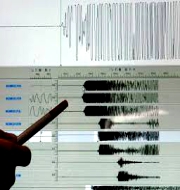Japanese scientists detect rare deep-Earth tremor S wave microseism
Scientists in Japan studying earthquakes for the first time have detected a rare deep-Earth tremor, known as an S (secondary) wave microseism. Microseisms are very faint tremors.
The detection was made by scientists from the National Research Institute for Earth Science and Disaster Prevention in Japan.
Key Facts
- The rare deep-Earth tremor S wave microseism was detected for the first time and traced its location to a distant and powerful storm.
- The storm in the North Atlantic known as a weather bomb which was a small but potent storm that gains punch as pressure quickly mounts.
- During the storm, groups of waves had sloshed and pounded the ocean floor which struck between Greenland and Iceland.
- Using seismic equipment on land and on the seafloor researchers found a tremor known as an S wave microseism.
- S wave Microseisms are very faint tremors compared to P (primary) wave microseisms and they occur in the 0.05 to 0.5 Hz frequency range.
- P wave microseisms can be detected easily during major hurricanes. They are fast-moving waves and can travel through gaseous, liquid and solid materials.
- But the elusive S waves are slower and move only through solid rock, not liquid. Humans feel them during earthquakes.
- Significance of Discovery: It will help experts learn more about the Earth’s inner structure and improve detection of earthquakes and oceanic storms.
- Learning more about S waves microseismic will further aid to understand the deeper crust and upper mantle structure.
Month: Current Affairs - August, 2016


